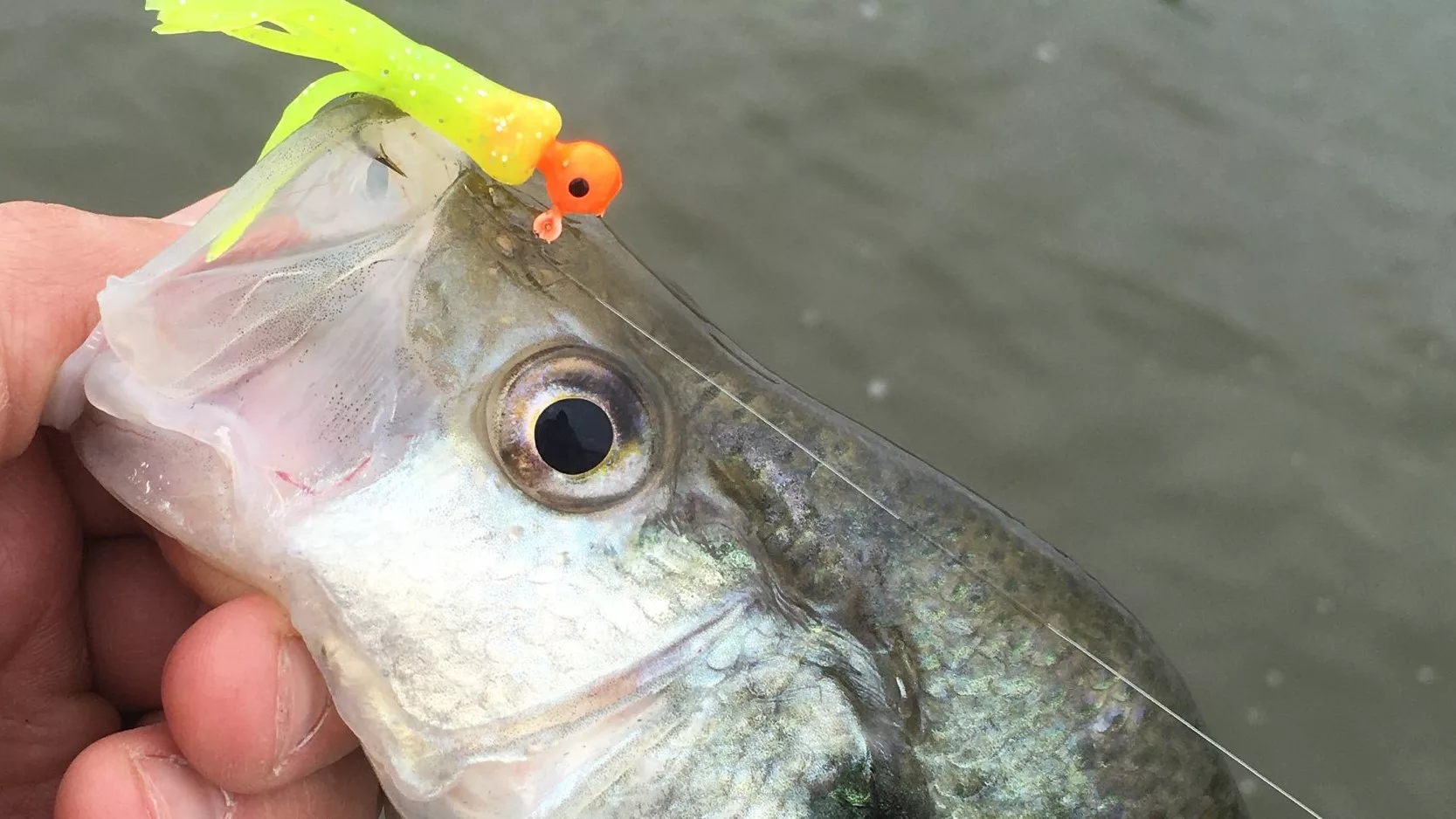
Simple Slabbing. A ballhead jig and a plastic tube are great starting points for finding crappies. From there it is often just determining the best color combination to catch more of them.
By Nick Simonson
Occam’s Razor is a tool of logic, which holds that by shaving off the most outlandish ideas for the solution to a problem, a mystery, or any other situation where one is trying to figure out the answer, the simplest of the remaining possibilities is usually the correct one, and the right direction in which to proceed with the next steps of the scientific method. The chosen starting point might not always work out, but it’s usually the best process to begin with.
The same holds true for angling in a vast majority of cases. The reason that versatile lures like a simple jig gets the job done, is that it provides the easiest and most deployable option under the water. Whether that’s through the ice or when things open up in spring, a jig tipped with a minnow, leech or crawler, or adorned with a curly-tailed grub, fuz-e-grub, or perhaps dressed with a pinch of marabou or krystal flash gives fish everything they need in a compact, bite-sized package. On the angler’s end, it can be bounced slowly along the bottom, flipped into tight quarters where fish are holding, or suspended and worked slowly around structure or at depths where schools are set up. Simplicity, versatility and utility, all falling safely within the edges of Occam’s Razor when setting out on the water and trying to solve the daily puzzle.
In fly tying and fly angling, simplicity is often shunned for the most ornate, technical, and multi-ingredient patterns, but again, the flies that are easiest to tie often outproduce the overelaborate streamers, nymphs and dry flies that sit near them in the fly box. This is especially true of warm-water fish, and while sure, some matching of the hatch is required from time to time, I haven’t found a school of bluegills that will turn down a two-ingredient black foam beetle, or an EZ nymph comprised solely of twisted pheasant tail fibers. What’s more, simple bucktail streamers and the ubiquitous woolly bugger, are some of the easiest patterns to tie, mimic just about every baitfish and non-baitfish food item in the water, respectively, and can be fished at every depth with the right adjustments. Simply knowing your quarry shaves off a lot of the outer edges of fly angling’s onion.

Lure selection is a huge part of the puzzle when it comes to catching fish on the ice, in open water, and those more technical areas of running streams or clear lakes. Before upping your game to more technical offerings, which have their place and their purpose when conditions get tough, unique feeding scenarios present themselves, or situations below the surface require a bit more technique to turn fish, keep the simplest options at hand for the best start on the day’s adventure or as you prepare your tackle and reload with favorite and new offerings for next season. Having those go-to lures that start things out on the right foot in the process ensures a quick trip up the learning curve regardless of the lake or river being explored.
While tying up elaborate jig patterns or twenty-ingredient fly recipes provides a lot of fun and challenge to fill up the winter, and perusing a fishing catalog for seven-finned bass plastics, crankbaits with crazy colors, and spinnerbaits with a billion blades can help turn the calendar toward spring, make sure to take stock of those tried-and-true lures. In addition to a favorite boat knife or snipper on a fishing vest, let Occam’s Razor be the blade that trims off the edges and establishes a core selection of suggestions for each time on the water and a great starting point to solving any angling mystery…in our outdoors.
